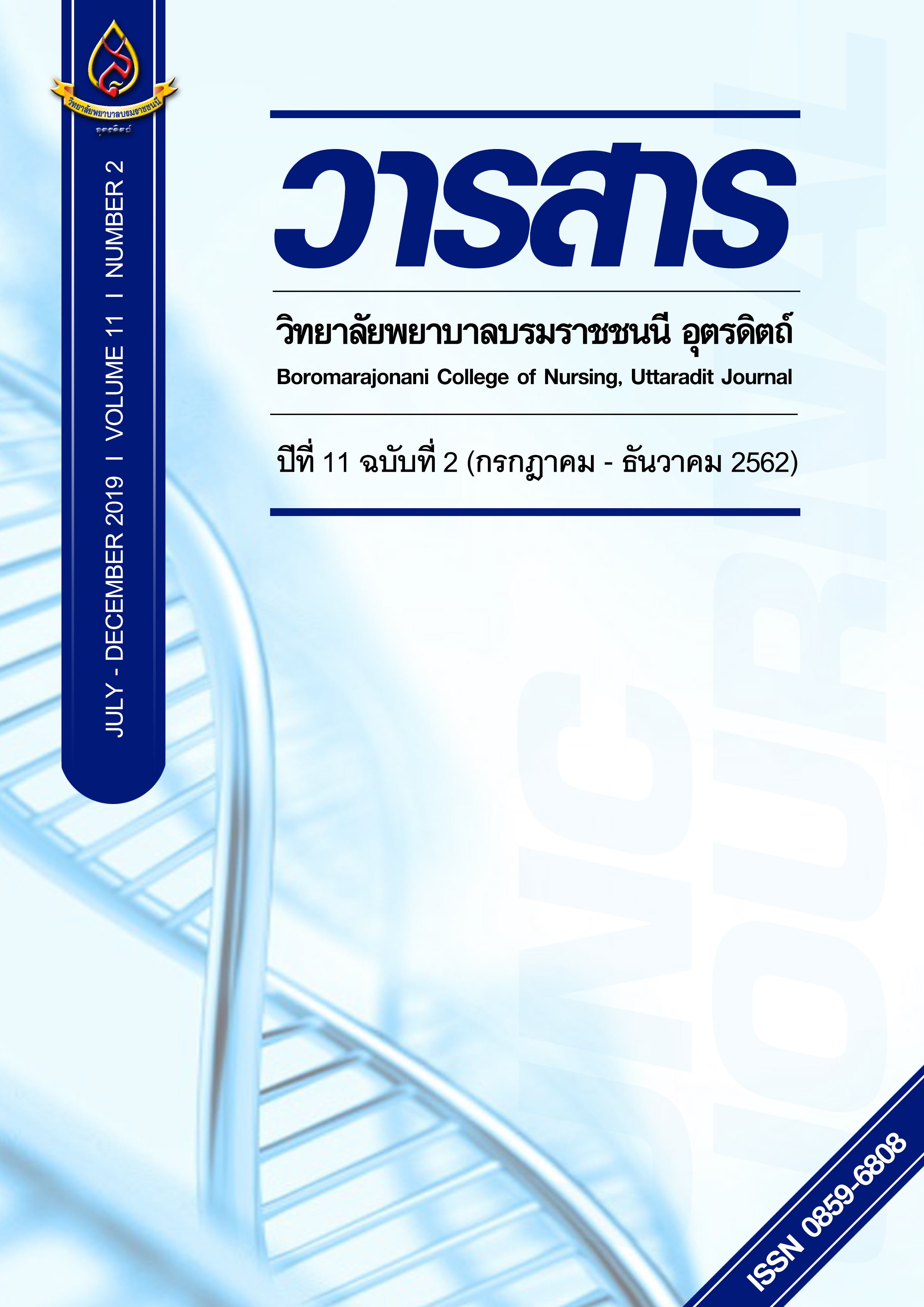เพศวิถีศึกษาและทัศนคติสองมาตรฐานทางเพศของครูต่อพฤติกรรมเสี่ยงทางเพศของวัยรุ่น
Main Article Content
บทคัดย่อ
การสอนเพศวิถีศึกษามีบทบาทสำคัญต่อการลดลงของพฤติกรรมเสี่ยงทางเพศในวัยรุ่น เพศวิถีศึกษาในโรงเรียนถูกขับเคลื่อนโดยครูสอนเพศวิถีศึกษา ครูจึงมีบทบาทที่สำคัญต่อความสำเร็จของเพศวิถีศึกษา ภายใต้การเปลี่ยนแปลงของสังคมในปัจจุบันทำให้ครูมีทัศนคติเกี่ยวกับเรื่องเพศแตกต่างกัน ส่วนใหญ่ยังเชื่อในมาตรฐานทางเพศแบบเดิม ซึ่งเป็นทัศนคติที่มองว่า หญิงต้องรักนวลสงวนตัว ในขณะที่ชายสามารถมีอิสระทางเพศได้ ทัศนคติแบบสองมาตรฐานทางเพศของครูจะนำไปสู่ผลลัพธ์เชิงลบของการสอนเพศวิถีศึกษา ครูส่วนใหญ่จะปรับเนื้อหาการสอนให้สอดคล้องกับทัศนคติของตน เน้นห้ามวัยรุ่นหญิงมีเพศสัมพันธ์ก่อนแต่งงาน ทำให้วัยรุ่นหญิงได้รับข้อมูลของการมีเพศสัมพันธ์ที่ปลอดภัยและการคุมกำเนิดไม่เพียงพอ วัยรุ่นชายและหญิงจะได้รับการพูดคุยเรื่องเพศที่แตกต่างกัน ปัญหาพฤติกรรมเสี่ยงทางเพศในวัยรุ่นจึงเพิ่มขึ้น บทความนี้มีวัตถุประสงค์เพื่อศึกษาและทบทวนเกี่ยวกับพฤติกรรมเสี่ยงทางเพศของวัยรุ่นในสังคมปัจจุบัน เพื่อนำไปสู่การเตรียมครูสอนเพศวิถีศึกษา โดยเน้นสร้างเสริมทัศนคติเชิงบวกเรื่องเพศให้สอดรับกับพฤติกรรมของวัยรุ่นในสังคมร่วมสมัย นำไปสู่การลดลงของการตั้งครรภ์และการเกิดโรคติดต่อทางเพศสัมพันธ์ในวัยรุ่นต่อไป
Article Details
บทความหรือข้อคิดเห็นใดใดที่ปรากฏในวารสารวิจัยการพยาบาลและวิทยาศาสตร์สุขภาพ เป็นวรรณกรรมของผู้เขียน ซึ่งบรรณาธิการหรือสมาคมศิษย์เก่า ไม่จำเป็นต้องเห็นด้วย และบทความที่ได้รับการตีพิมพ์เผยแพร่ถือเป็นลิขสิทธิ์ของวารสารวิจัยการพยาบาลและวิทยาศาสตร์สุขภาพ
References
2) Bureau of Epidemiology. (2015). Surveillance reports of behaviors related to HIV infection among Thai student. Nonthaburi: Bureau of Epidemiology, Department of Disease Control Ministry of Public Health, Bangkok. (in Thai)
3) Center for Disease Control and Prevention. (2016). Sexual risk behavior guidelines & resources. Retrieved from http://www.cdc.gov/healthyyouth/sexualbehaviors/strategies.htm
4) Future of Sex Education Initiative (FoSE). (2015). National sexuality education standards: Core content and skills, K-12. Retrieved from http://www.futureofsexeducation. org/documents/josh-fose-standards-web.pdf
5) Haberland, N., & Rogow, D. (2015). Sexuality education: emerging trends in evidence and practice. Journal of Adolescent Health, 56, S15-S21.
6) Information and Communication Technology Center. (2014). Education statistics 2014. Office of the Permanent Secretary, Ministry of Education, Bangkok. (in Thai)
7) Khadijeh, D., Khadijah, N., Zahra, P.M., & Hamideh, D. (2015). Teachers’ attitudes regarding sex education to adolescent. International Journal of Psychology and Behavioral Research, 4 (1), 73-8.
8) McNeely, C., & Blanchard, J. (2012). The teen years explained: A guide to healthy adolescent development. Center for Adolescent Health at the Johns Hopkins Bloomberg School of Public Health, United States of America.
9) Ministry of Education, Thailand. (2016). Research for sexuality education report. Bangkok. (in Thai)
10) Muangpin, S., Tiansawad, S., Kantaruksa, K., Yimyam, S., & Vonderheid, S. (2010). Northeastern Thai adolescents perceptions of being unmarried and pregnant. Pacific Rim International Journal of Nursing Research, 14(2), 149-61. (in Thai)
11) Pusuwun, S., Wongyai, K., & Leekuan, P. (2013). Behavior on perceived self-efficacy and sexual risk behavior among female adolescent. Nursing Journal, 40(4), 68-79. (in Thai)
12) Reiss, I.L. (1960). Premarital sexual standards in America. The Free Press, New York.
13) Srijaiwong S. (2016). Sexual risk behaviors among teenage having sexual experience: A multilevel study. [dissertation] (PhD’s thesis). Mahidol University, Bangkok. (in Thai)
14) Tangmunkongvorakul, A., Kane, R., & Wellings, K. (2005). Gender double standards in young people attending sexual health services in Northern Thailand. Culture, Health & Sexuality, 7(3): 361-73. (in Thai)
15) Thaweesit, S., & Boonmongkon, P. (2012). Pushing the boundaries: The challenge of sexuality education in Thailand. In Thanenthiran S, editor. Reclaiming & redefining rights. Thematic studies series1: Sexuality & Rights Asia. Malaysia: Asian-Pacific Resource & Research Center for Women (ARROW), 44-53. (in Thai)
16) The United Nations Population Fund Thailand (UNFPA). (2013). Minutes of the selected stakeholder consultation on the issue of adolescent pregnancy in Thailand. Paper presented at the Adolescent pregnancy Conference, Bangkok, Thailand. (in Thai)
17) Therawiwat, M., Imamee, N., & Worraka, A. (2016). Factors affecting sexual risk behaviors among female adolescents: a case study of female junior high school students, Kanchanaburi province. Journal of Public Health, 46(3), 284-98. (in Thai)
18) UNESCO. (2016). Comprehensive sexuality education: The challenges and opportunities of scaling-up. Retrieved from http://unesdoc.unesco.org/ images/0022/ 002277/227781E.pdf
19) VanLandingham, M., & Trujillo, L. (2012). Recent changes in heterosexual attitudes, norms and behaviors among unmarried Thai men: A qualitative analysis. International Family Planning Perspectives, 28, 6-15.
20) Zurbriggen, E.L., Collins, R.L., Lamb, S., Roberts, T.A., Tolman, D.L., Ward, L.M., et al. (2007). Report of the APA task force on the sexualization of girls. Washington, DC: American Psychological Association. Retrieved from http://www.apa.org/pi/wpo/sexualization.html

